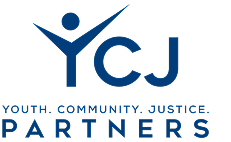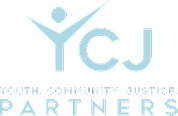This is the first installment of a three-part series about a rest-focused program co-designed with and for youth in custody. Part two will delve into the program’s activities, while Part three will feature feedback from the youth participants.
Context: From 2017-2019, Dr. Christine Gerchow collaborated with young people to design a Mindfulness, Mindlessness & Meditation group at John A. Davis Juvenile Hall in Contra Costa County, targeting youth affected by trauma and in custody. In June 2019, she shared insights from this initiative at the Coalition for Juvenile Justice (CJJ) Annual Conference in Washington, D.C.
You Are Worth Taking Time For: The program “Mindfulness, Mindlessness & Meditation” (MMM) was designed under the theme “You are worth taking time for,” emphasizing the importance of rest and acknowledgment of one’s value. This program uniquely addressed the physiological aspects of trauma, recognizing that many trauma symptoms manifest somatically. By utilizing the body as a primary entry point, the approach facilitated a process of healing from trauma through accessible and non-intimidating methods that were selected by the youth themselves.
There Are Many Ways to Rest: The program adopted sensory mindfulness to make practices like meditation more relatable, ensuring that youth did not feel discouraged if traditional methods like deep breathing or maintaining focus during meditation did not work for them. Instead, activities that allowed for soothing sensory engagement—like feeling a paintbrush or smelling lemon oil—were incorporated.
Logistics:
- Sessions were held once per week, lasting between 70 and 80 minutes, with an additional 30 minutes allocated for setup and cleanup.
- Each group consisted of 5 to 7 young men, ensuring a supportive, intimate setting that fostered personal growth and community.
- This structure not only promoted deep restfulness but also provided ample time for youth to develop mindfulness skills at their own pace.
Partnership with probation and custody partners: The MMM program was rooted in the close collaboration and ongoing communication with probation partners and custody staff. Their roles were crucial at multiple levels, beginning with the approval of essential supplies and the syllabus, which ensured that all materials and content aligned with the safety and operational standards of the facility. Furthermore, securing a consistent, scheduled, and prioritized slot for the program within the facility’s routine was critical. This scheduling allowed the program to run smoothly and provided the young men with a reliable and structured environment conducive to healing.
The cooperation of the probation and custody staff in this scheduling process highlighted their commitment to the rehabilitative goals of the program. For example, upon noticing the young men displayed greater calmness and serenity after program meetings, probation officials scheduled MMM groups on visiting days. This adjustment allowed the youth to enter family visits with enhanced poise and openness, thereby improving the critical family communication that contributes to favorable outcomes upon release.
Additionally, the flexibility allowed by these probation partners enabled the clinician to integrate program activities (i.e., aromatherapy, stretching) into family sessions. This integration was vital for extending the therapeutic benefits beyond individual sessions and into the family dynamic.
Acknowledgments: Dr. Gerchow’s work would not have been possible without the support of the Contra Costa County Department of Probation, particularly staff from the Cypress unit (Youthful Offender Treatment Program 2017-2019) and Shasta unit (Girls In Motion, 2016-2019).



